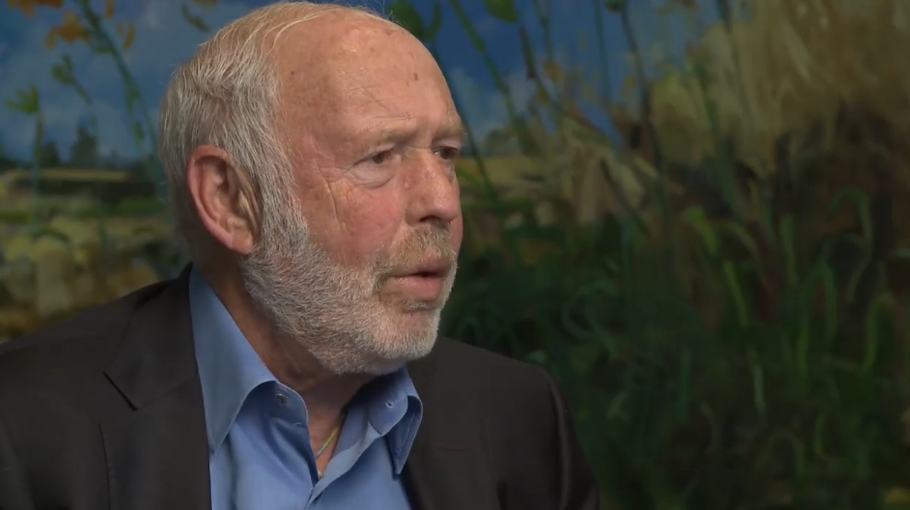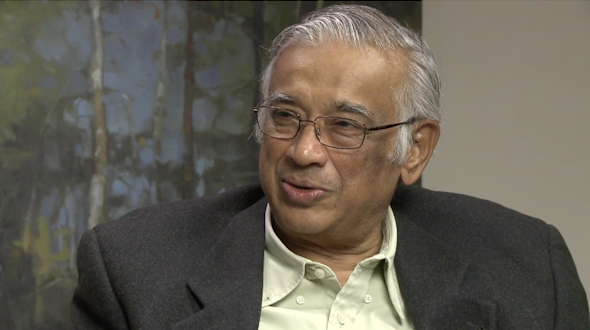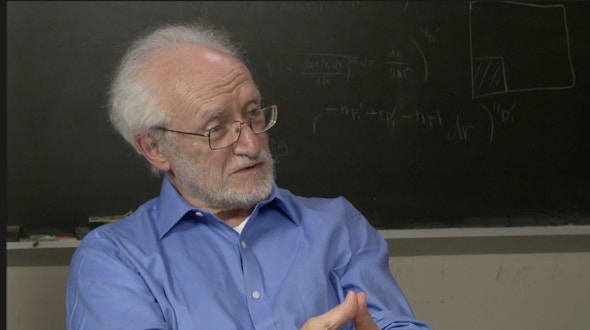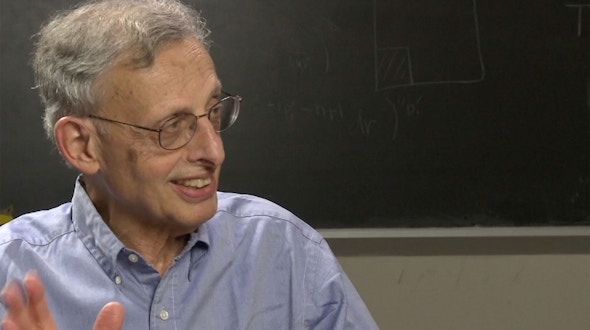Click here to see Jim Simons’ 2015 address to the National Academy of Sciences upon induction, “My Peregrinations through Mathematics.”
Click here to see Jim Simons’ 2014 speech at the International Congress of Mathematicians, “My Life in Mathematics.”
Click here to see Jim Simons’ 2010 speech at MIT, “Mathematics, Common Sense, and Good Luck: My Life and Careers.”
 When he was fourteen, Jim Simons got a vacation job in the stockroom of a garden supply store, but he was so bad at remembering where things went that he was quickly demoted to floor sweeper. At the end of the holiday season, his supervisors kindly asked him about his future plans, and Simons could tell that his answer struck them as hilarious: He wanted to study mathematics at the nearby Massachusetts Institute of Technology. “The guy who couldn’t remember where to put the sheep manure, he wants to be a mathematician at MIT,” Simons sensed they were thinking.
When he was fourteen, Jim Simons got a vacation job in the stockroom of a garden supply store, but he was so bad at remembering where things went that he was quickly demoted to floor sweeper. At the end of the holiday season, his supervisors kindly asked him about his future plans, and Simons could tell that his answer struck them as hilarious: He wanted to study mathematics at the nearby Massachusetts Institute of Technology. “The guy who couldn’t remember where to put the sheep manure, he wants to be a mathematician at MIT,” Simons sensed they were thinking.
Three years later, however, Simons did just that: He enrolled at MIT, launching a two-decade academic career. Unlike most research mathematicians, however, Simons went on to pursue two other major careers: as CEO of a highly successful hedge fund company, and later as a philanthropist.
Simons, who was born in 1938 in Brookline, Massachusetts, fell in love with mathematics as a child. “I didn’t think it was math, just something fun to do,” he says. An only child, he was contemplative by nature and enjoyed pondering mathematical ideas. “I think there’s a quality of just being able to get lost in thought that is pretty good for math,” he says.
Simons entered MIT in 1955 determined to major in mathematics, even though he didn’t have much of a sense of what a mathematician actually did. As he immersed himself in his studies, he started to feel more and more like a mathematician. The clincher in his deciding to pursue a career in mathematics, he says, came when he saw two MIT mathematicians, Isadore Singer and Warren Ambrose, launch into a deep discussion late at night at a café. “I thought it was the coolest thing — what a life, to go out at 2 a.m. with friends and do math over coffee,” he says. “It seemed like the world’s greatest career.”
After his undergraduate studies, Simons completed a doctorate in mathematics at the University of California, Berkeley, in 1961. After several years in academic positions, in 1964 Simons joined the research staff of the Communications Research Division for the Institute for Defense Analyses (IDA) in Princeton, N.J. The division’s focus was code breaking, and Simons found that he enjoyed coming up with algorithms to attack particular types of cryptographic problems. At the institute, he learned how to make mathematical models to interpret data. “I think if I hadn’t been there, the business we built later would never have occurred,” he says.
IDA allowed its researchers to spend half their time pursuing their own research projects. Simons used this time to tackle a problem about area-minimizing surfaces and higher-dimensional analogs, for which he was awarded the American Mathematical Society’s Oswald Veblen Prize in Geometry in 1976.
In 1968, Simons left IDA and became chairman of the mathematics department at Stony Brook University in New York. While there, he worked with mathematician Shiing-Shen Chern, then at Berkeley, to develop the Chern-Simons invariants, certain geometric measurements which not only apply to mathematics but play a useful role in both quantum field theory and condensed matter physics. It was an exciting time, Simons says, because mathematicians and physicists were just starting to realize the intertwined nature of physics and geometry. “Now they are inextricably intertwined, as far as I can see,” he says.
Simons had always been interested in finance, and in 1978 he decided to leave academia and go into business, starting a hedge fund management firm in Stony Brook, New York called Monemetrics. At first, it didn’t occur to Simons to apply mathematics to his business, but he gradually realized that it should be possible to make mathematical models of the data he was collecting. Simons started recruiting some of the best mathematicians and data-modeling experts from his days at IDA and Stony Brook.
Monemetrics’ name was changed to Renaissance Technologies in 1982. The mathematical models the company developed worked better and better each year, and by 1988, Simons had decided to base the company’s trades entirely on the models, which “turned out to be a wonderful decision,” he says. Today, the firm manages roughly $20 billion in assets. The company’s great scientists and collaborative atmosphere are its “secret sauce,” Simons says.
Simons retired as the company’s CEO in 2009 and became chairman of its board. He now dedicates much of his time and energy to philanthropy. In 1994, Simons and his wife, Marilyn Hawrys Simons, founded the Simons Foundation, which has grown into one of the largest charitable institutions to focus on support of basic research in mathematics and the sciences. Simons is also the founder and chairman of Math for America, whose mission is to improve mathematics education in U.S. public schools. He serves as a trustee of MIT; Brookhaven National Laboratory in Upton, New York; the Institute for Advanced Study in Princeton; The Rockefeller University in New York City; and the Mathematical Sciences Research Institute in Berkeley. He is chairman emeritus of the Stony Brook Foundation.
Simons, now 76, has also found time to return to his first love, mathematical research. About a decade ago, he started thinking about mathematical objects called differential characters, which he and Jeff Cheeger had conceptualized years earlier, and which are now central to an area called differential cohomology. Simons, working with Dennis Sullivan, has made some meaningful progress in the field.
“I’m supposed to be retired,” he says. “But I’m juggling a lot of things.”
Bios
Press & Interviews, etc.

 When he was fourteen, Jim Simons got a vacation job in the stockroom of a garden supply store, but he was so bad at remembering where things went that he was quickly demoted to floor sweeper. At the end of the holiday season, his supervisors kindly asked him about his future plans, and Simons could tell that his answer struck them as hilarious: He wanted to study mathematics at the nearby Massachusetts Institute of Technology. “The guy who couldn’t remember where to put the sheep manure, he wants to be a mathematician at MIT,” Simons sensed they were thinking.
When he was fourteen, Jim Simons got a vacation job in the stockroom of a garden supply store, but he was so bad at remembering where things went that he was quickly demoted to floor sweeper. At the end of the holiday season, his supervisors kindly asked him about his future plans, and Simons could tell that his answer struck them as hilarious: He wanted to study mathematics at the nearby Massachusetts Institute of Technology. “The guy who couldn’t remember where to put the sheep manure, he wants to be a mathematician at MIT,” Simons sensed they were thinking.

